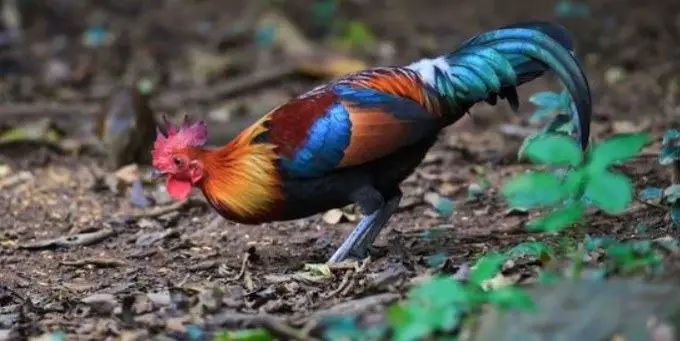No products in the cart.
Chicken
Are Chickens Reptiles?
I’ve witnessed arguments over the question of “are chickens reptiles?”. No surprises why people are confused as chickens and reptiles share both commonalities and differences. On top of that, there seems to be clear scientific evidence of a link between chickens and reptiles. Why don’t you spend a few minutes reading through this article to find out the answer?
*This post may have affiliate links, which means I may receive commissions if you choose to purchase through links I provide (at no extra cost to you). As an Amazon Associate I earn from qualifying purchases. Please read my disclaimer for additional details.
What is a reptile?
Reptiles are also known as vertebrate animals.
A popular species of reptile is the dinosaur which was sadly extinct about 65 million years ago. Crocodiles and alligators still exist today but are listed endangered and threatened animals. Other reptiles that are still alive and familiar with our daily life comprise lizards, snakes, tortoises, and turtles.
What defines them as reptiles are physical characteristics including backbones, cold-blood, dry skin, scales or horny plates. Besides, they breathe with the aid of lungs. Their food is other animals. Also, most of them typically lay eggs on land for breeding.
So, are chickens reptiles?
No, they are not although chickens and reptiles are alike in some ways. First, they lay hard-shelled eggs. Secondly, they have an internal skeleton and lung. For such reasons, some define chickens reptiles.
Given that, chickens are actually not reptiles. They are birds, more specifically fowls as fowls are birds raised for meat or eggs. The differences below will explain why chickens are not necessarily categorized as reptiles.
1. Chickens have feathers, reptiles have scales
Feathers are such a vital part of birds. They help the birds control the temperature and protect the birds from the harsh weather and living conditions. Next, they enable birds to fly. Finally, they are for courtship displays. As you know, chickens are classified as birds, so they obviously have feathers.
All reptiles have scales on the epidermis, the top layer of their skin. Yet their scales vary in size, shape, and structure depending on the species. The scales serve as a very helpful weapon against predators while allowing reptiles to slither or crawl freely in and out of water.
2. Chickens are warm-blooded, reptiles are cold-blooded
Warm-blooded animals have a warmblood temperature that is not affected if the temperature around them changes. The temperature between 105 – 107 degrees F is normal for chickens, a lot higher than ours.
The temperature of reptiles is a lot lower than chickens. Their operating temperature is at around 50 – 104 degrees F. Their body temperature is determined by how warm or cold their surroundings are, meaning they cannot produce the heat but rely on the surroundings to warm up. That explains why most reptiles are found in hot or warm climates and often caught basking in the sun in the morning.
Read more: Top 10 Beautiful Yellow Chicken Breeds
Any relations between birds and reptiles?
Yes, there are. According to the archaeological evidence, birds belong to maniraptors – a group of ancient reptiles.
Maniraptors were two-legged and feathery dinosaurs whose wrist bones were developed to support the powerful movement of the front limbs. For birds, the bones supported their flight.
For your information, technically, according to the phylogenetic system, not only birds and reptiles but also mammals share a reptile-like ancestor.
Read More: Can Chickens Swim or Float? Chickens can swim, but not for long. Here’s all there is to know about chickens and water!
How did chickens evolve?
It is believed that an asteroid struck Earth about sixty-five million years ago and has erased a large number of species, including most of the dinosaurs. Yet some small-sized species weighing about one kilogram or so managed to survive the disaster and one of them is known as birds.
This group was called birds because scientists found many fossils of an early bird called Archaeopteryx in the 19th century, which had wings and feathers like birds even though they did not have beaks but snouts, similar to those of their dinosaur ancestors. That is one of the reasons why these birds looked nothing like the birds we see today.
As you know, the beak is a signature body part of the bird group, and the fact that those birds were found without beaks raised doubts. However, the scientific results in improved gene trees of chickens explained the transformation from snouts to beaks occurred about 40-50 years after Archaeopteryx.
At first, those beaks were just tiny bones at the front of the face. Time passes, the jaw bones shrank and the beak grew longer. That was a result of life adaptation due to the changing environment and forage for food.
Did you know: How Do Chickens Pee?
Conclusion
Though it is understandable why people think chickens are reptiles, I believe you are no longer confused about the group animal they belong to with reasons and evidence provided above. And if anyone ever wonders whether chickens are reptiles, you are confident to impress them.

